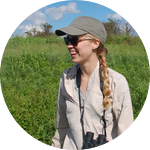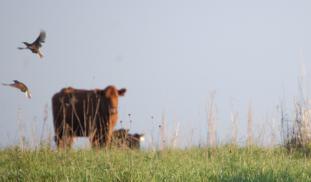Please wait...
About This Project
Though grasslands are increasingly scarce in the Midwest, there are pockets remaining on private lands grazed by cattle. Restoration thus requires balancing the needs of birds with the needs of landowners. To address this, we propose to research habitat quality for grassland birds in a working landscape. Using field data, we study grassland bird abundance, prey abundance, and nest site selection in response to invasive management and human decisions driving landscape changes.
More Lab Notes From This Project

Browse Other Projects on Experiment
Related Projects
A sociotechnical toolkit for coral conservation and regeneration
This project aims to develop a sociotechnical toolkit for deploying meaningful biotechnologies in coral...
How does indigenous storytelling communicate best practices for coral reef management on Ulithi Atoll
Coral reef ecosystems are in need of conservation solutions. Indigenous adaptive management, supported by...
How do Black women fishing communities in Ecuador and Madagascar manage mangrove habitats and mitigate climate change?
I'm studying the resilient ways of ILK (indigenous and local knowledge) eco-governance of mangrove habitats...





